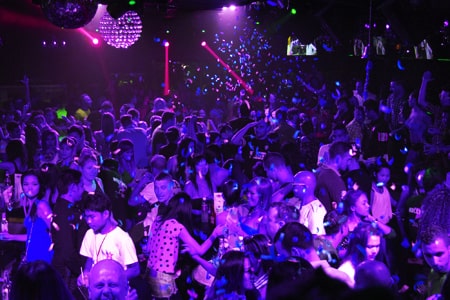Dance clubs create a unique cultural experience distinct from other social settings.
Dance Clubs Culture

Upon entering, the pounding bass and deafening music levels make verbal communication nearly impossible, forcing patrons to rely on body language and non-verbal cues. The atmosphere is highly sexualized, with sexually explicit music videos, scantily clad women, and sexually suggestive dancing mirroring the video imagery.
Alcohol consumption is heavily promoted through advertisements, provocative drink specials like "Blowjob" or "Slippery Nipple," and a culture that encourages intoxication. Dark corners, flashing lights, and a sea of people on the dance floor contribute to an environment where inhibitions are easily shed.
The Objectification of Women
Music Videos Shaping Dance Culture
The Role of Alcohol
Dance Clubs: A Subculture of Excess and Objectification
Dance clubs create a unique cultural experience distinct from other social settings. Upon entering, the pounding bass and deafening music levels make verbal communication nearly impossible, forcing patrons to rely on body language and non-verbal cues to exchange information. The atmosphere is highly sexualized, with sexually explicit music videos, scantily clad women, and sexually suggestive dancing mirroring the video imagery. Alcohol consumption is heavily promoted through advertisements, drink specials with provocative names, and an overall culture that encourages intoxication. Dark corners, flashing lights, and a sea of people on the dance floor contribute to an environment where inhibitions are easily shed.
The Objectification of Women
Dance clubs reinforce traditional gender roles and the objectification of women in several ways:
- Women are often offered free entry or drinks as incentives to attend, while men pay cover charges.
- Music frequently depicts men's sexual conquest of women in graphic detail.
- Women wear tight, revealing clothing, while men dress casually.
- The dance floor becomes an arena where men spectate and women perform, with staff actively promoting and positioning attractive women to be visible.
- Non-verbal cues like women's clothing are misinterpreted by men as signals of sexual availability, contrary to women's stated motivations of simply socializing with friends.
Music Videos Shaping Dance Culture
Music videos heavily influence the sexually charged dance styles in clubs, with patrons mimicking the subordinate roles and explicit moves of women in the videos. Clubs reinforce this by playing the music videos on screens near the dance floor as a "how-to" guide. The result is often "nasty, dirty grinding" between dancers.
The Role of Alcohol
Alcohol is ever-present in dance clubs, with prominent advertising, sexualized drink promotions like "Slippery Nipple" shots, and an atmosphere that encourages excessive consumption. Clubs specifically advertise high-alcohol shots over lower-alcohol drinks to accelerate intoxication. The combination of loud music, sexually charged atmosphere, objectification of women, and pervasive alcohol creates a subculture ripe for violations of personal norms and boundaries. While patrons cite dancing and socializing as primary motivations, the club environment promotes excessive alcohol use and normalization of women's objectification through music, videos, and non-verbal cues. This raises concerns about the potential for harmful situations within this distinct cultural experience.